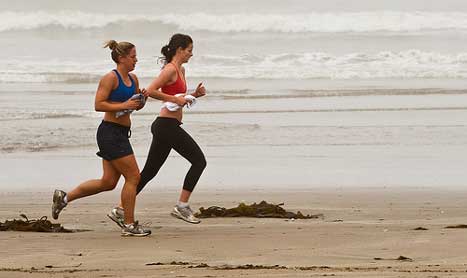 That nagging pain at the front of your shins can make exercising difficult at times, especially when you’re out on a long run – so what are shin splints and can you get rid of them?
That nagging pain at the front of your shins can make exercising difficult at times, especially when you’re out on a long run – so what are shin splints and can you get rid of them?
What causes shin splints?
Shin splints usually occur during high intensity activity and cause pain at the front lower half of your legs due to more pressure or impact occuring in that area. The activities that can cause them include running, and high agility stop-start sports such as netball, tennis, soccer and rugby. Exercising on hard surfaces can also cause shin splints – sometimes the pain can become so bad you need to stop the activity you’re doing.
How do I know if I have shin splints?
You will be feeling a dull to intense pain in the front lower half of your legs during and/or after physical activity.
Can I ignore them and keep going?
It’s best not to! If you’re particularly prone to shin splints and continue to ignore them on a regular basis, it could develop into a stress fracture. A physiotherapist or GP may help provide more insight into what’s causing it for you, and what course of treatment or preventative measures you could follow.
How do I prevent or treat shin splints?
The best things you can do to prevent shin splints include:
- Avoid exercise on hard surfaces, rugged areas or downhill/uphill slopes.
- Get good quality, properly fitted running or cross-training shoes with plenty of support, and the right corrective insoles if you have high arches or flat feet.
- Warm up properly at the beginning of your exercise session so that your body gradully adjusts.
- Some people find that compression tights can help alleviate symptoms.
If you’ve already experienced them and need to treat your shins, use RICE – rest, ice compression, elevation. Make sure you rest your legs, periodically apply a towel-wrapped icepack to the area to help reduce the swelling, compress if possible and keep your feet up on a couch or similar. You will need to check with a physio or your GP how long you will need to rest them for and what activities you can do, but typically you will be restricted to low-impact activities such as cycling or swimming for a few weeks.
Image / Flickr – Mike Baird

